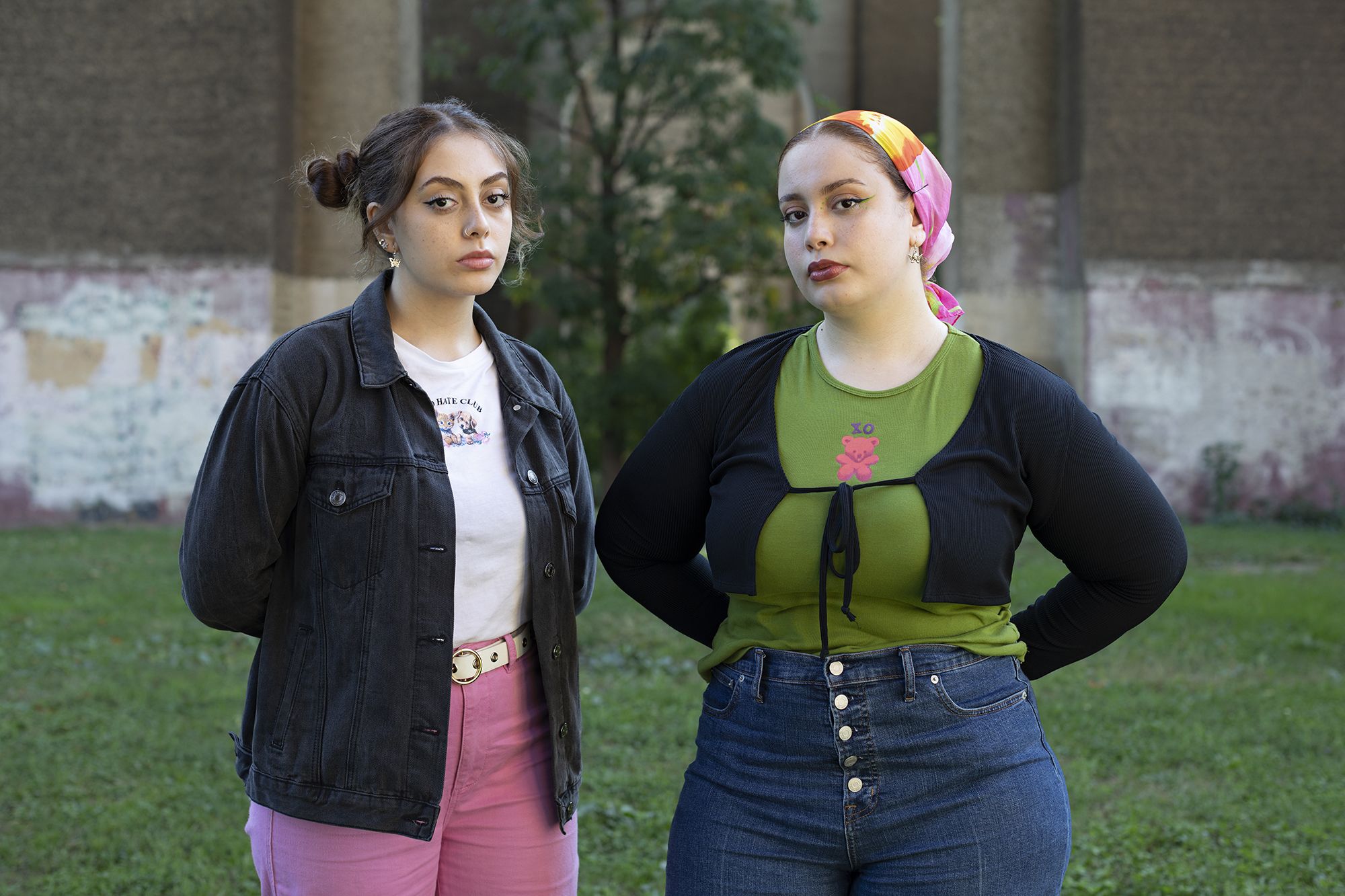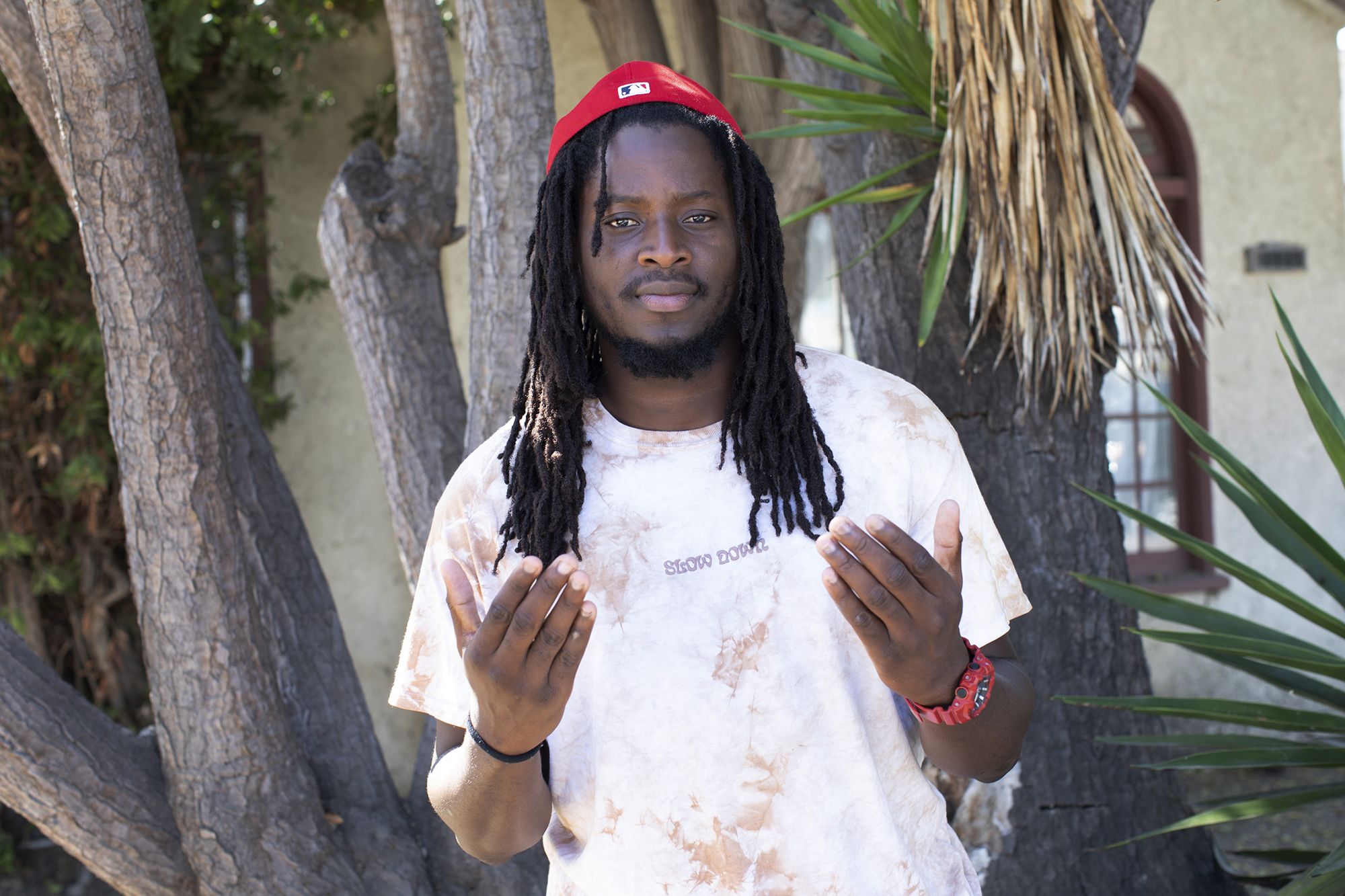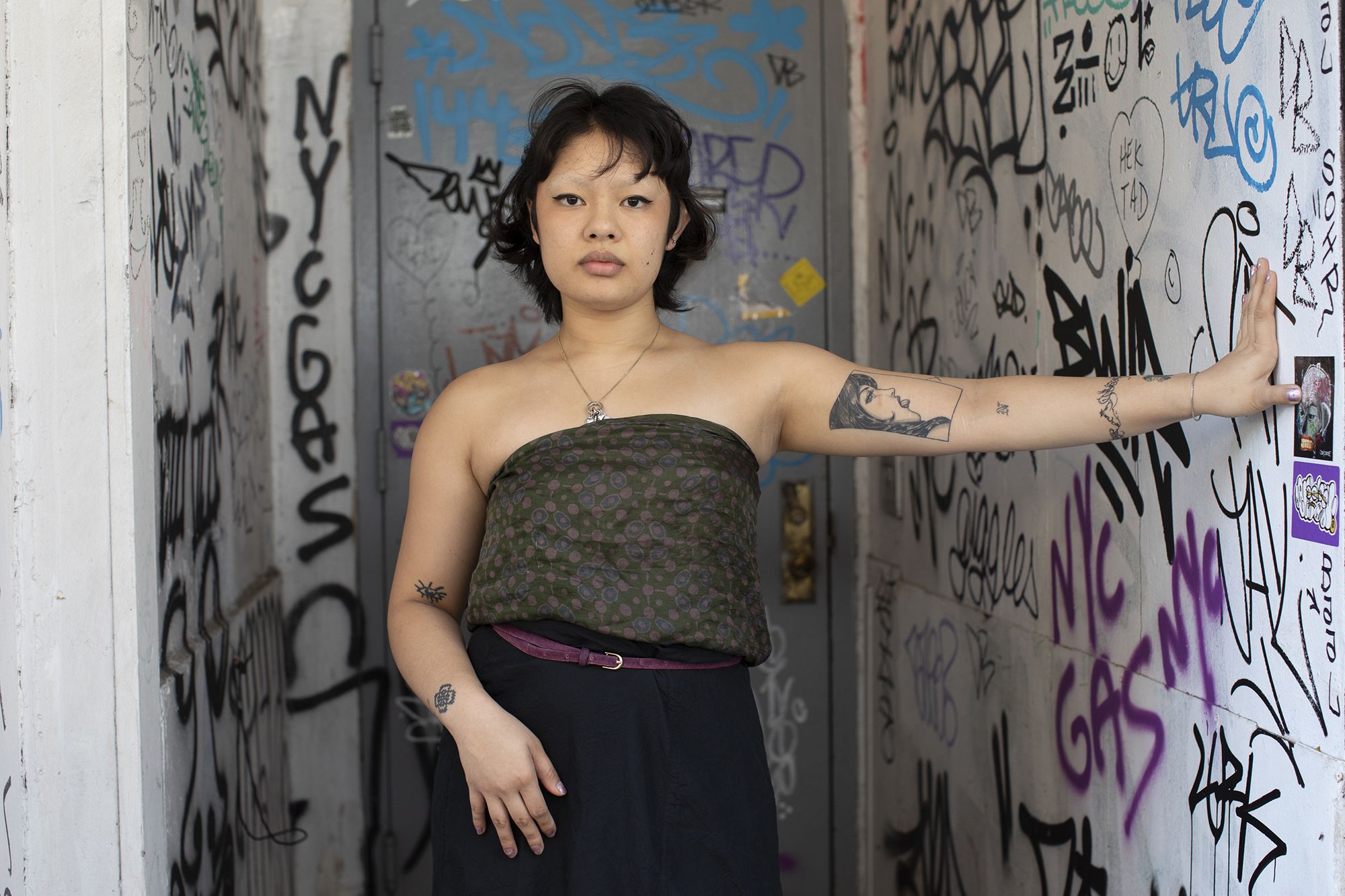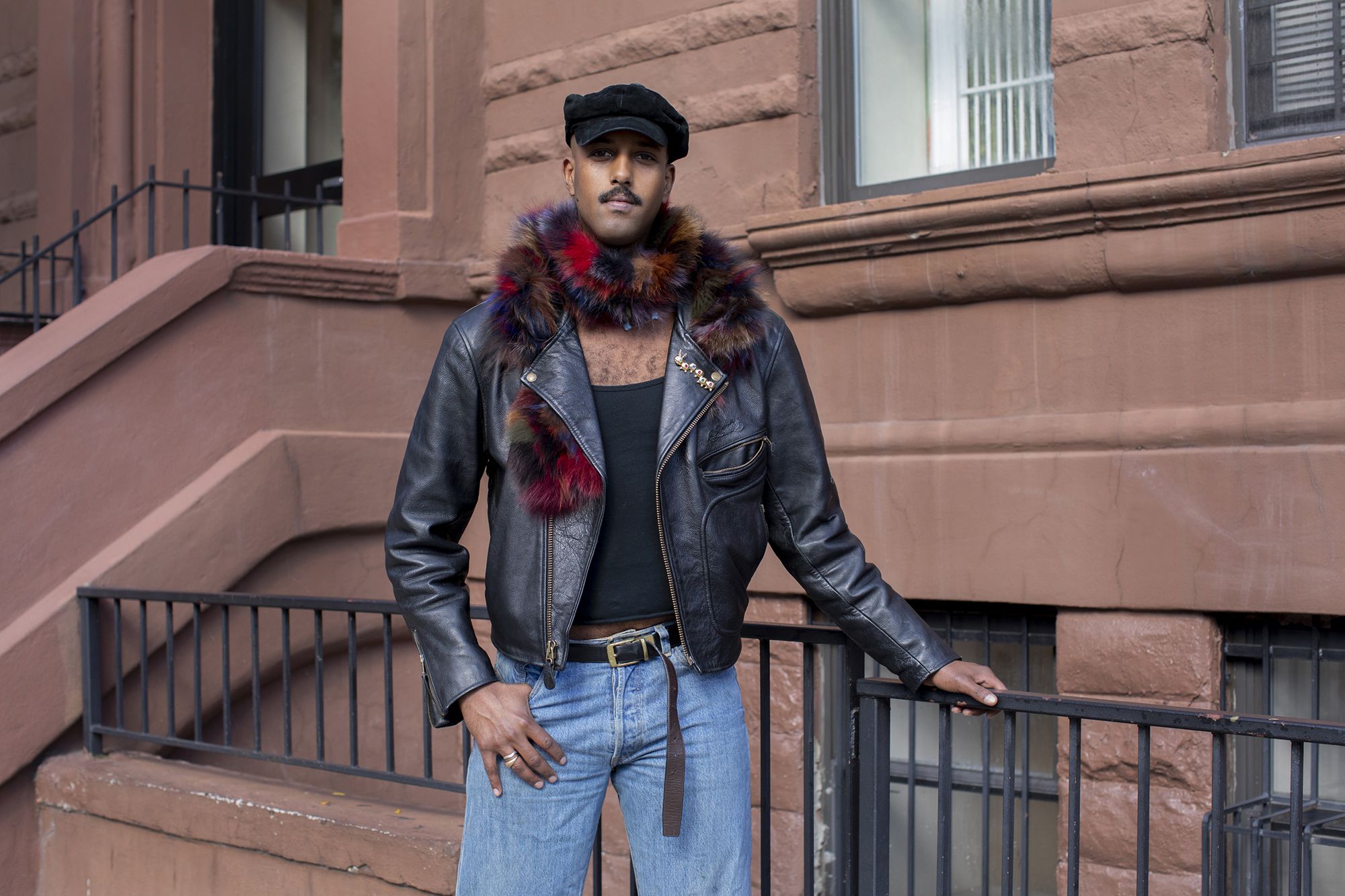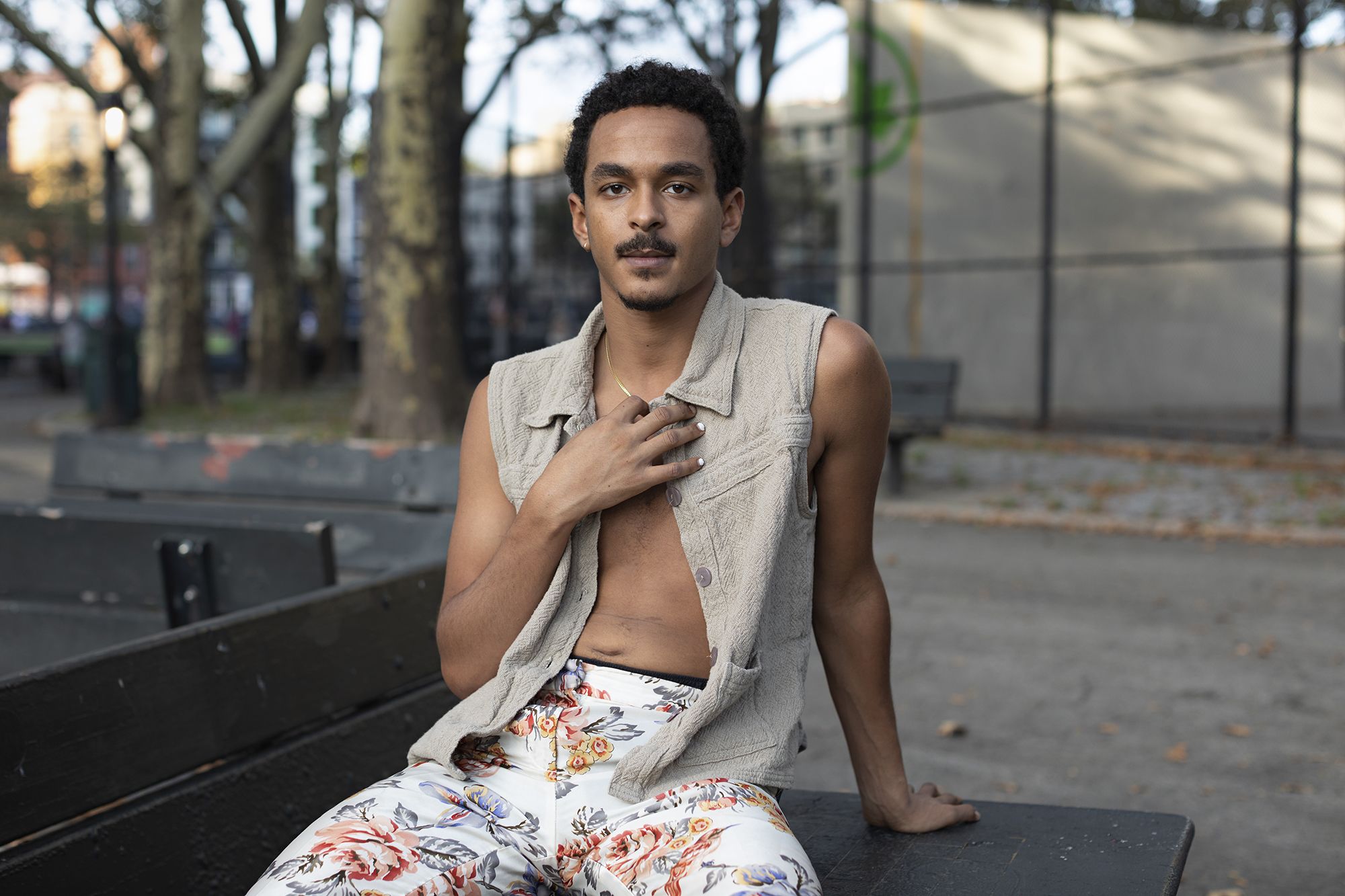Editor’s Note: This feature is part of CNN Style’s series Hyphenated, which explores the complex issue of identity among minorities in the United States.
In one photo, Julo stares down the camera dressed in a tie-dye t-shirt, dreadlocks and a red snapback cap. In another, Adbul wears low-waisted jeans, a motorcycle jacket and a decadent fur scarf. Candace is pictured in a pair of Nike Air Jordans, her long platinum hair stark against her black shirt. These are some of the faces featured in “Muslims in America,” an ongoing photography series by British artist Mahtab Hussain.
“I grew up always being told that Islam is a way of life, but I didn’t really know what that meant,” Hussain told CNN over a video call. “But going to the US and meeting all these communities, people from all walks of life, all over the world, it’s really interesting how this Islam fits in with the culture.”
Like an intricately woven tapestry, the series stitches together the many people who share his identity, which is underrepresented in the US. In 2017, the Pew Research Center estimated there were 3.45 million Muslims living in the US — and projected that by 2040, Muslims would replace Jews as the country’s second-largest religious group after Christians. By 2050, the same study also predicted that the US Muslim population would grow to a total of 8.1 million, or 2.1% of the total population. Despite these figures, the experience of Muslims today can be misconstrued or entirely lacking from the cultural conversation.
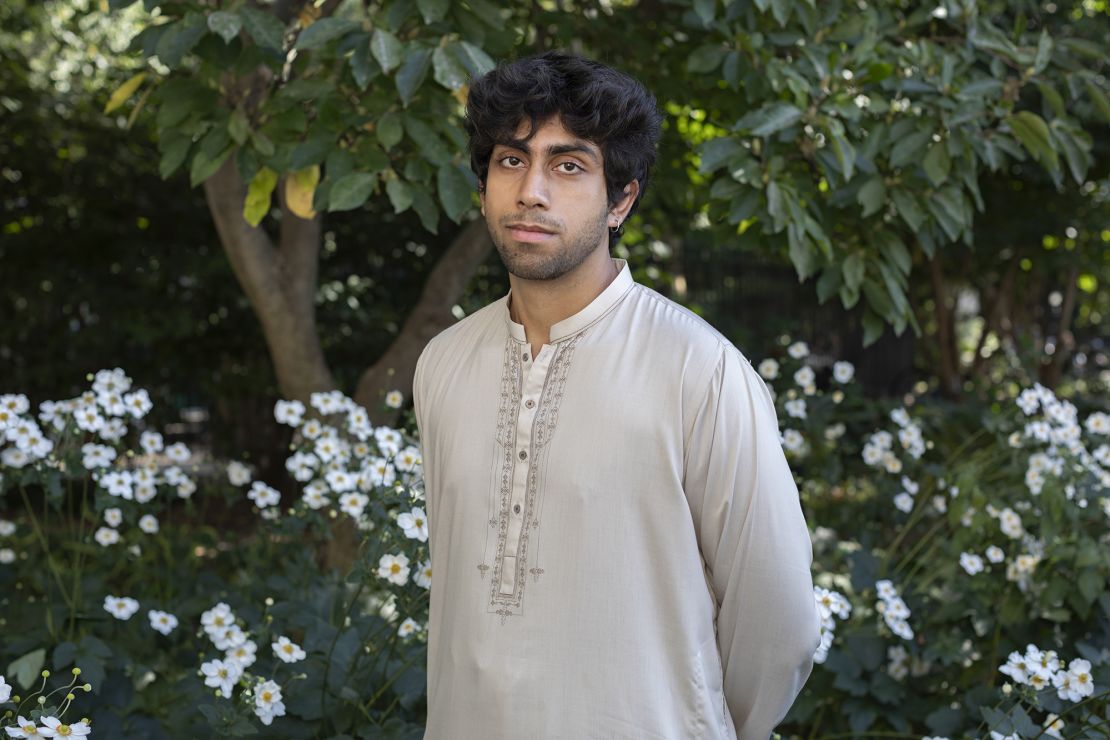
According to the USC Annenberg Inclusion Initiative, just 1% of all speaking characters across 200 popular TV shows in the US, UK, Australia and New Zealand were Muslim. The visibility that does exists has often perpetuated harmful stereotypes. In another study that focused on the portrayals of Muslims in movies, also by the USC Annenberg, nearly 40% of primary and secondary Muslim characters across 200 top-rated films were depicted as perpetrators of violence. “The representation of Muslims on screen feeds the policies that get enacted, the people that get killed, the countries that get invaded,” wrote actor and producer Riz Ahmed, in an accompanying call-to-arms document called “The Blueprint for Muslim Inclusion.” The project outlines ways to boost Muslim representation in TV and film in order to help combat anti-Muslim hate, erasure and stereotypes.
Hussain, who was born in Glasgow to first-generation immigrants from Kashmir and Pakistan, felt compelled to challenge the misconception of Muslims in America, particularly after Islamophobia rose after the 9/11 attacks. He began the project in 2021, two decades on, as a way to visually commemorate the anniversary from another perspective. “When 9/11 happened, so many people in the communities in the US and the UK shut down, because they were fearful of being seen as being Muslim. The religion was hijacked, their narrative was completely hijacked, a lot of interesting filmmakers, musicians and cultural creatives stopped,” he said. “But in the last 20 years, I’ve seen a new wave of pride emerge about being Muslim.”
So far, Hussain has documented subjects living in New York, LA, Baltimore and Toronto, Canada. His sitters are a mix of people responding to open casting calls as well as ones he spots while riding his bike through city streets. Some wear hijabs and kufi hats, others are dressed in tank tops, hoodies, cargo pants and mini skirts. As a British Pakistani Muslim, he says he’s noticed that the makeup of the community across the pond is more diverse. “The major difference is diversity. I’ve met people from all over the world in the US who are Muslim: Palestinians, people from all over Africa. LA has one of the largest Iranian populations. It’s not the same in Britain.”
The result is a rich portfolio, capturing people of different ages and ethnicities as well as their clothing choices — some appear covered up, while others show more skin and tattoos. Not only do Hussain’s photographs visually challenge the way American Muslims have been portrayed, he has also offered space for his subjects to share their experiences. In transcribed interviews printed alongside the images, they open up about issues such as the balancing act of embracing aspects of US culture and honouring their faith. Whether to wear a hijab or not, for example, played on the mind of some of the women he has lensed, while others reflected on the stigma of dressing modestly in a Western society. “There’s no narrative that I’m trying to push through,” he said. “It’s about what the community is saying, and who these people are. That’s how I’ve always made my work.”
According to Hussain, many of the people he met saw Islam as something forgiving and evolving, rather than strict and fundamentalist. “I’m learning so much from the people I meet,” he told CNN. “The LGBTQ community in New York City absolutely schooled me with regards to what Islam means to them. There’s a narrative that says if you’re gay or queer, you can’t be religious. But they (embraced) their journey and struggle.”
His next installment will take place in Dearborn, Michigan, a city with the largest population of Muslims in the entire nation. In 2022, Democrat Abdullah Hammoud became Dearborn’s first Arab American mayor, and has been in the spotlight recently for raising concerns about US President Joe Biden’s response to the conflict in Gaza.
“I worry Biden will be remembered not as the president who saved American democracy but as the president who sacrificed it for Netanyahu,” the mayor wrote in an op-ed for The New York Times in February.
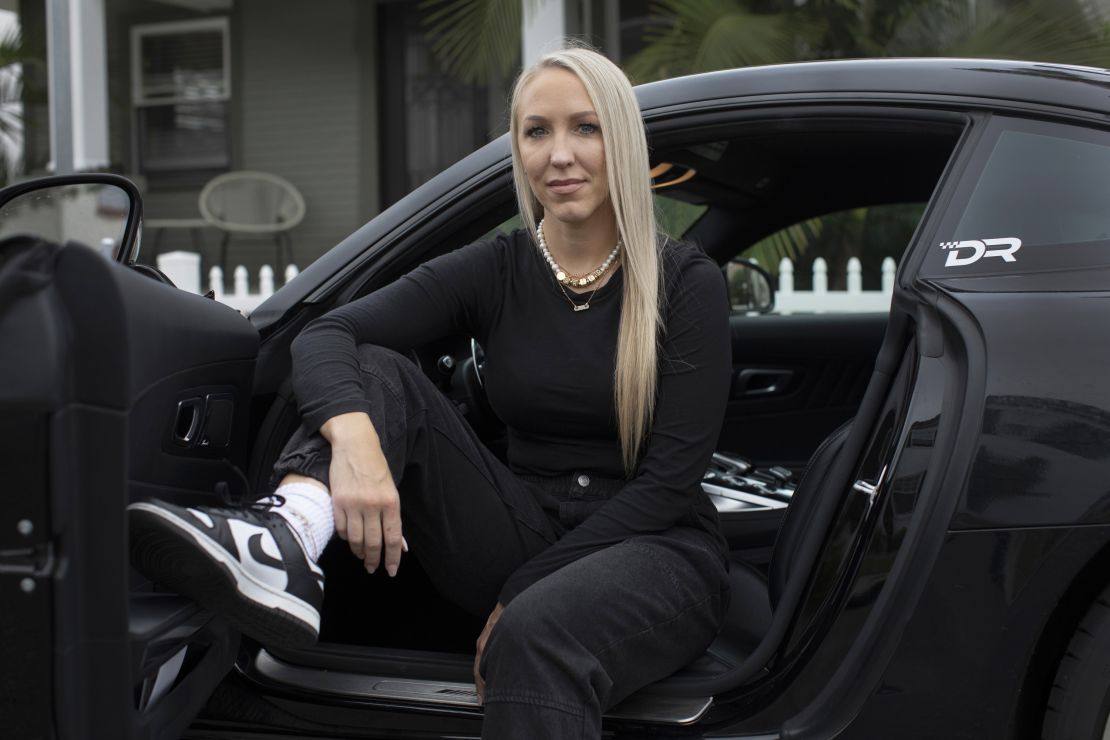
Many members of Dearborn’s Arab American and Muslim American communities have openly rejected Biden for his handling of the Israel-Hamas war. Hussain, who typically tries to keep the project as positive in tone as possible, is planning a trip to the city in order to capture Muslim residents in this politically-charged atmosphere. (Michigan is a key state in the 2024 election).
“I think it’s really important there’s a chapter in the work that talks about this,” he said. “Yes, this (series) is about looking positively at a new identity that’s formed in the US, but October 7 shifted the conversation again.” This month, the Pew Research Center published a survey that found 70% of US Muslims believe discrimination against Muslims has increased since the Israel-Hamas war began, and over 50% say they feel afraid of news around the war.
“It just shows how delicate this all is, especially for Muslims in the US.”
Hussain says the response to the series has so far been affirming, with many participants celebrating his mission to broaden Muslim representation. “Everyone was really open to being part of the work,” he said.
“Strangers would come up to me and hug me. The love that I received, it absolutely changed me as a person.”
More of Mahtab Hussain’s work can be found here.
Correction: This story has been updated to correct the spelling of two of the participant's surnames.
